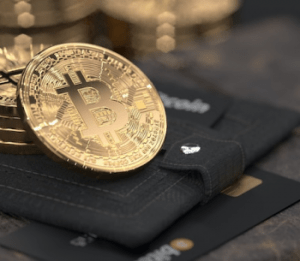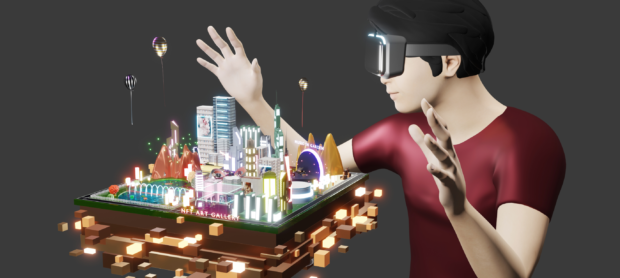These days, the gaming industry is trendy among the young generation, so, therefore, explains the rapid development of this industry and the high revenues on the digital market. Recently NFT technology has expanded the possibilities of many business spheres. But the technology has brought the most opportunities to the gaming industry and influences its growth in its own way. Blockchain has become the perfect combination for gaming platforms. The gaming industry, however, like any other, has its advantages as well as disadvantages. It can be like a large number of hacks, high centralization, or low transparency. NFT technology helps to solve these issues and gives gamers great platforms to play on. As a company that delivered more than 60 gaming projects in the last 4 years, we should take this responsibility and publish our vision on this industry.
NFT Game: Quick Overview
NFT technology is directly transforming the concept of the game industry. Now the game becomes a source of earning not only for the developer but also for the player, which definitely increases their demand and engagement.


NFT (Non-Fungible Token) is a unique digital certificate stored in a blockchain that guarantees the object’s originality and gives exclusive rights to it. In the game industry, NFT is used to buy unique assets within the game so that the player can prove his possession of the object. NFT are used in-game to represent or purchase in-game items such as avatars, in-game rewards, weapons, lands, and more, giving them real value.
Web App Or Mobile App?
So, you have come up with the decision that you want to create an NFT game. The question you will undoubtedly face is how you want the end-users to interact with your game. There are two ways – through a web browser or through a mobile app. Both options have their advantages and disadvantages, and your choice will depend directly on how you see the result. Web apps provide high accessibility – they can be easily reached from all over the world using various devices, making them more affordable to a larger audience. Web games are faster and easier to create, but they don’t have access to the user’s device, limiting many of the features that native apps use for more personalized use.
Mobile app development provides your future game with more functionality as well as more incredible speed. But unlike web games, mobile app development can be more expensive. A native app is created for a specific operating system. But since each OS is different, you will have to make a different version for each one. Analyzing the NFT games market, we can say that the easiest and fastest solution would be a web game, whose functionality is thoroughly enough to create a great game and satisfy users’ expectations
Why Is NFT Effective In The Game Industry?
Why have NFT games become so attractive in the gaming industry, and more and more of them are appearing on the market? This popularity is due to a number of factors that are inherent to this type of game. Let’s go over each of them.
Uniqueness. A factor that is key for the game industry to attract more potential audiences. The more unique the concept you offer players, the more interest and interaction it will lead to. The main point of NFT is to buy special in-game items, so the more rare and interesting assets there are in the game, the longer and more time users will spend there and make purchases.
Control. Buying rare virtual assets allows players to demonstrate their in-game levels. Faking these assets, of course, can lead to your game simply ceasing to be played. To avoid this, a blockchain is implemented that verifies all digital assets and transfers them to its digital vault where players can verify them.
Transparency. The transparency factor is just as important – it increases trust between players. Very often, during in-game transactions for purchases in a centralized environment, changes occur. This has minimized the confidence shown by players. Blockchain technology provides this transparency through its algorithms.
Optimized storage. Storage of in-game assets was always going to be less than efficient in a centralized system. Sudden game stoppages during gameplay often result in players losing their in-game assets. A blockchain system that stores all purchased in-game support in NFT has also helped eliminate this problem.
Multi-chain capabilities. Another critical point for the industry. All in-game assets are represented as tokens, and NFT is built on blockchain technology, allowing players to use their in-game purchases in various gaming platforms built on the same blockchain technology. Digital game assets can also be sold and bought on multiple platforms built on the identical blockchain. This adds to the appeal of these games.
The main advantage of blockchain-based games is that you can monetize your game time in various ways. In addition, such games have research potential. After all, in the virtual world, you can conduct any kind of socio-economic experiment and simulate any conditions. This means that cryptogams can be useful not only for game studios but also for various companies.
The Forecast For NFT Games
The development of NFT games is relatively young, and the market is in its growth stage. Now – most existing games are gamification of trading, where the gameplay takes a back seat. The main focus is making money. But with time, competition, and the desire to provide the best gaming experience in collaboration with making money will come to the forefront. The prediction is that the rapid development of NFT games is inevitable. Blockchain provides decentralization and security and opens up new horizons for gamers.
The rise in popularity of NFT also contributes to this trend. According to a report from NonFungible.com, token sales rose to $2 billion in the first quarter of 2021. People are actively investing in unique digital goods, thereby increasing mass audiences’ confidence in the format. If ten years ago it was hard to imagine that investing in pixels could become a profitable business, today everything is moving toward virtual objects having the same value as items in the real world.





